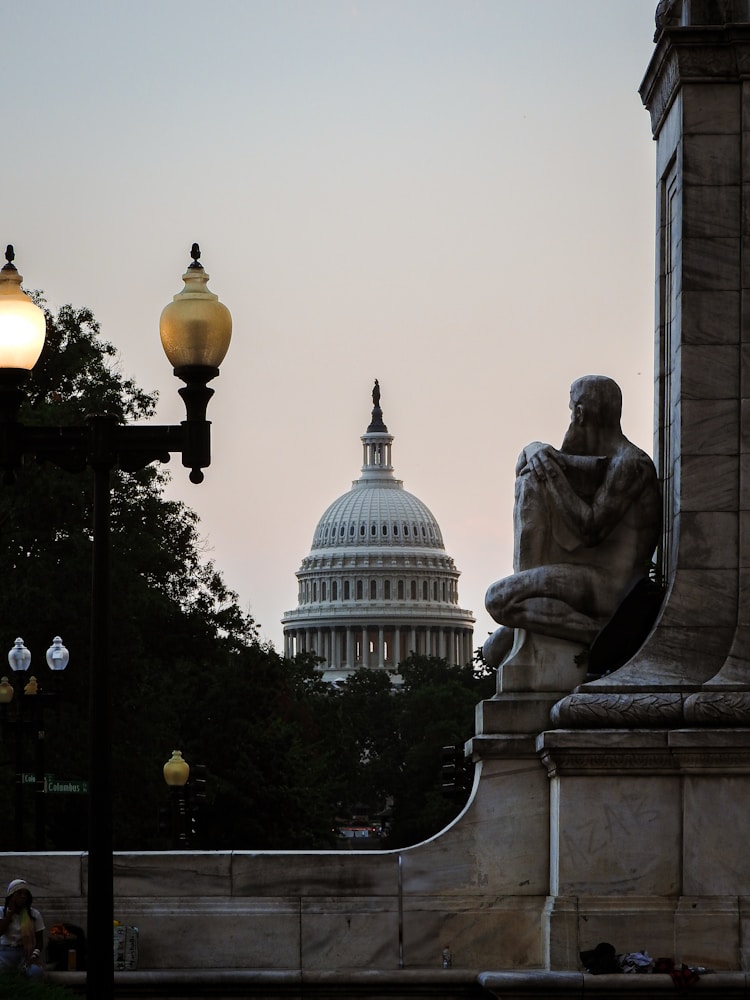When the news broke that the Senate inched forward on ending the government shutdown, the air felt heavy. Not dramatic. Not loud. Just heavy, the kind of weight you feel when a long argument starts to wind down but no one is sure whether to breathe yet. We’ve all lived through shutdowns before, but this one carries a different pulse. It’s slower. More personal. And when the Senate took its first procedural step on Sunday, many of us leaned forward because we knew the moment mattered, even if the full outcome is still hanging in the air.
The step itself was simple on paper. Senators voted 60–40 to advance a compromise bill to fund the government. That vote didn’t end the shutdown. Instead, it opened the gate to debate, amendments and more procedural steps. But most of all, it opened a very visible divide inside the Democratic caucus.
Moderate Democrats agreed to move forward without a guaranteed extension of the Affordable Care Act tax credits that expire on January 1. Progressives and many mainstream Democrats were furious. They believe voters want this fight. They believe the subsidies are the difference between care and no care for millions of families. And they believe taking the vote without hard protections is a signal that the party is giving up leverage too early.
But in other words, this vote didn’t just start the legislative process. It started the emotional one too.
We’re going to walk through this moment together. Slowly. Clearly. The goal here is to understand what happened, why it happened and what comes next, without drowning in jargon or noise. Instead of racing through the politics, we’ll move at a steady pace so that every part of the story stays grounded in real-life impact. After more than a decade of health care fights, shutdown cycles and political standoffs, you and I know that nothing in D.C. happens in a vacuum.
So let’s begin at the beginning.
Understanding the Shutdown’s Breaking Point
Every shutdown starts the same way. Congress fails to pass a spending bill. Agencies run out of money. Workers get furloughed. Services freeze. The public grows frustrated. And lawmakers race to explain who is to blame.
This time was no different, but the pressure point was clearer than usual. The key fight centered on the Affordable Care Act tax credits that help millions of Americans afford coverage on the insurance marketplace. These credits are set to expire on January 1, and Democrats wanted the extension included in the funding bill.
Republicans said no.
Democrats said they’d hold firm.
And then the government ran out of funding.
Shutdown.
Through it all, you and I could feel the tension building. The subsidies are not a niche issue. They affect families who work hourly shifts. They affect parents trying to stretch their paychecks. They affect self-employed workers who don’t have employer-based coverage. Instead of being a political accessory, these credits are practical survival tools.
But most of all, they’re popular. And that’s why so many Democrats were ready to dig in and refuse any deal without them.
Yet the political calendar kept ticking. Agencies started scaling back services. Federal workers began preparing for delayed paychecks. Airports braced for staffing shortages. And every hour of shutdown increased the pressure on Congress to move.
You could sense it. We all could.
The 60–40 Vote That Shifted Everything
On Sunday, something gave way. A group of moderate Democrats signaled that they were willing to move forward with the funding bill even without the guaranteed health care extension. Instead of insisting the subsidies be locked in now, they agreed to a separate vote later.
In other words, they were willing to split the issues.
Some saw this as compromise.
Some saw it as surrender.
Everyone saw it as a major shift.
When the vote came, it cleared the procedural hurdle needed to begin real debate. The shutdown didn’t end right then. Instead, the Senate opened the door to final negotiations, which could take days, especially if frustrated Democrats use delay tactics.
The number 60 matters because it means bipartisan support. Ten Republicans crossed over. Without them, the vote would have stalled.
Instead of a wall, the Senate found a crack. And the procedural wheels started turning.
But most of all, this vote revealed how differently Democrats view the path ahead. Some believe moving forward creates space to finish the fight. Others believe moving forward means losing the fight entirely.
And that division will shape every debate this week.
Why Moderate Democrats Stepped Away From the Line
From the outside, it may look like moderates folded. But the truth is more complex, and the reasons stretch far beyond political calculation.
1. Shutdown Fatigue
Shutdowns hurt real people. Not lawmakers. Workers. Families. Local economies. Every day adds strain. Moderate Democrats argued that ending the shutdown as fast as possible helps more Americans than holding out for a policy guarantee they might secure later anyway.
2. Voting Sequence Strategy
The promise of a later vote is not nothing. It’s a commitment from Senate leadership. And while it doesn’t guarantee success, it keeps the issue alive instead of letting it disappear into the legislative swamp.
3. Pressure to Demonstrate Governance
After more than a year of political gridlock, moderates believe voters want to see Congress actually function. Passing funding bills is the bare minimum of governing, but in today’s environment, even the minimum can feel like progress.
Instead of framing it as capitulation, they frame it as responsibility.
But most of all, they believe the final fight isn’t over.
In contrast, many Democrats feel burned by similar promises in the past. They worry that separating the vote weakens their leverage. They fear the health care expansion will fall victim to political fatigue or another unrelated fight. And they’re not wrong to fear that. Congress has dropped important promises more than once.
That’s what makes the moment so tense. No one is acting blindly. Both sides believe they’re protecting Americans. They just disagree on how.
What Happens Next in the Senate
This week will unfold like a slow march through parliamentary rituals.
- Debate period
Senators argue, propose amendments and outline the costs of each decision. - Procedural votes
Even simple steps take hours. Sometimes overnight. - Final passage vote
If Democrats don’t stall, the bill could pass quickly. If they do, the process stretches. - Separate health care vote
This is the promise moderates relied on. But its timing depends on how cooperative the caucus wants to be.
Instead of one dramatic turning point, this process is a series of small ones. Each vote adds weight. Each delay changes the tone. And each statement from senators will be analyzed for what it signals about the extension fight.
But most of all, this sequence gives us time to see where the true fault lines lie.
Why This Moment Feels Bigger Than a Routine Shutdown
Shutdowns happen. Compromises happen. But this specific fight sits at the intersection of policy, party identity and public trust.
Health Care As Identity
For more than a decade, Democrats have run on defending the ACA. It’s part of the party’s backbone. Backing down on subsidies touches nerves deeper than normal fiscal debates.
The Midterm Cycle
Elections are never far away. Every decision lawmakers make now will be replayed in ads, town halls and interviews.
Voter Expectations
Americans are tired. We’ve lived through economic whiplash, political tension and rising health costs. People want stability. They want fairness. And they want clarity.
Instead of fueling confidence, these fights often create more confusion. But most of all, they signal what issues lawmakers believe are worth losing sleep over.
In this case, the subsidy extension is about more than numbers. It’s about security.
The Emotional Undercurrent in Washington
You can hear it in the speeches. You can see it in the interviews. And you can feel it in the way senators are talking about each other.
There is frustration.
There is impatience.
There is fear of letting people down.
Democrats are not unified right now. They’re trying to navigate the difference between principle and practicality. Between urgency and patience. Between fighting and governing.
Instead of pretending the divide isn’t there, they’re airing it out in real time. But most of all, they’re signaling to voters that this is a moment where the stakes are personal.
Health care always is.
How This Affects Regular People Right Now
Shutdowns rarely feel abstract. They show up in daily life.
Federal parks close.
Tax offices slow to a crawl.
Workers wait for paychecks.
Small businesses lose contracts.
Travel delays pile up.
Community programs pause.
For families relying on ACA subsidies, anxiety increases with every headline. The January 1 deadline feels closer. The uncertainty feels sharper. And instead of clear answers, we’re all watching senators trade statements and delay motions.
That’s why this procedural vote mattered so much. It didn’t solve anything, but it opened a path. A rocky one. A slow one. But still a path.
And in a shutdown, even a narrow path feels like relief.
The Road Ahead: What We Should Pay Attention To
As the week unfolds, there are a few key signals worth watching.
1. Speeches from Democratic leadership
Their tone will reveal whether they intend to push hard for the subsidies later or quietly let the issue drift.
2. Public comments from moderates
They will need to reassure their base that they didn’t give up the fight.
3. Republican willingness to compromise
Some Republicans are open to limited health care extensions. Others are not. The balance will matter.
4. How long Democrats delay the process
Short delays mean frustration. Long delays mean deep anger.
Instead of guessing, we can watch how senators behave when cameras are off. But most of all, we can watch how unified they are behind the scenes.
Unity moves bills. Fractures slow them.
When the Dust Settles
This moment is not just about reopening the government. It’s about clarity. Direction. Trust. And the belief that lawmakers understand what people are facing in their day-to-day lives.
You and I know that shutdowns are never just political chess. They’re real. They’re felt. And they leave marks.
The Senate’s first step out of the shutdown may look procedural, but it’s also symbolic. It shows where pressure is building. It shows which issues will define the next few months. And it shows which lawmakers are willing to take risks for compromise and which expect a firmer stand.
Instead of seeing this as the end of the fight, it may be more accurate to see it as the midpoint. After more than a week of shutdown effects spreading across the country, the Senate is trying to crawl toward a solution. It isn’t elegant. It isn’t inspiring. But it is movement.
And sometimes movement is the only way forward.
A Quiet Step Toward Tomorrow
As the Senate grinds through its next steps, the nation waits with a mix of hope and exhaustion. You and I both know this feeling. The slow return to normal. The uneasy uncertainty of what comes next. But most of all, the understanding that policy decisions echo far beyond Capitol Hill.
This vote didn’t settle the debate. It didn’t end the shutdown. It didn’t resolve the health care battle. But it did remind us that even in tense political seasons, the machinery of government can still inch forward, one procedural step at a time.
And sometimes, that quiet forward motion is how real change begins.





